4 Tips to identify genuine Lifud drivers
Wiring of Triac Dimming & Wireless Dimming
4 Steps to Enable 0/1-10V Dimming Wiring
4 Steps to Enable DALI Dimming Wiring
What is DALI Intelligent System?
Two Kinds of Dimming Curves for DALI Projects You Should Know
What's the Future of Intelligent LED Lighting?
Two Kinds of Dimming Curves for DALI Projects You Should Know
Situation like this sometimes occurs: the Dali driver manufacturer and the Dali dimmer manufacturer claim that their products have good dimming effect, but when you use them in one system, you find that the dimming effect is not as good as expected. Recently, such situation happened to LIFUD. After carefully analyzing the application situation, our technician solved the dimming problem easily by modifying the dimming curve setting of LED driver on DALI software.
What’s going on? This article will tell you a “little secret” about “dimming curves” of DALI driver. (Note: just spare one minute to learn technical knowledge, and the conclusion is available in the end of this passage for your quick reference)
Before reading the following text, it’s necessary to explain the meanings of several coordinate variables, and this article only analyzes the effect of smooth DALI dimming.
1-254 signal: the control signal of dimmer, varying among 1-254
Dimming signal: the output signal of dimmer, varying among 0-100%. The driver receives this signal and executes accordingly.
Light effect: the change of light fixture’s brightness among 0-100% (here only refers to the light fixtures under dimmable drivers’ control)
The connection among them is as follow:

Now we can go to a further sharing.
In LED lighting, dimming curve is important to achieve the better light effect. In LED drivers, dimming curves can be classified as “linear dimming” and “logarithmic dimming”.
Linear curve dimming of driver: the dimming signal received by the driver is linear with the impact of driver on the light effect.
Logarithmic curve dimming of driver: in the range of low dimming signal, the impact of driver on light effect changes slowly, while in the range of high dimming signal, the impact on lighting effect changes rapidly. So the curve is logarithmic.
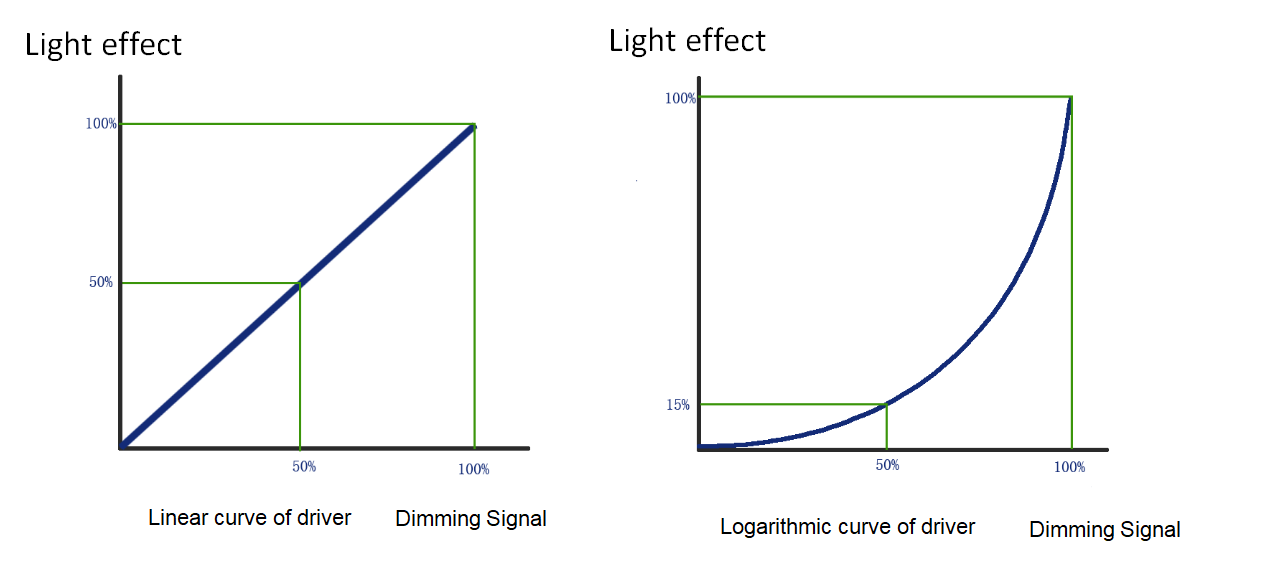
Some people may say, "the logarithmic curve dimming effect of the driver performs better.". Is it true?
Before explaining which dimming curve works better, we need to introduce another concept - the sensitivity of human eyes to light.
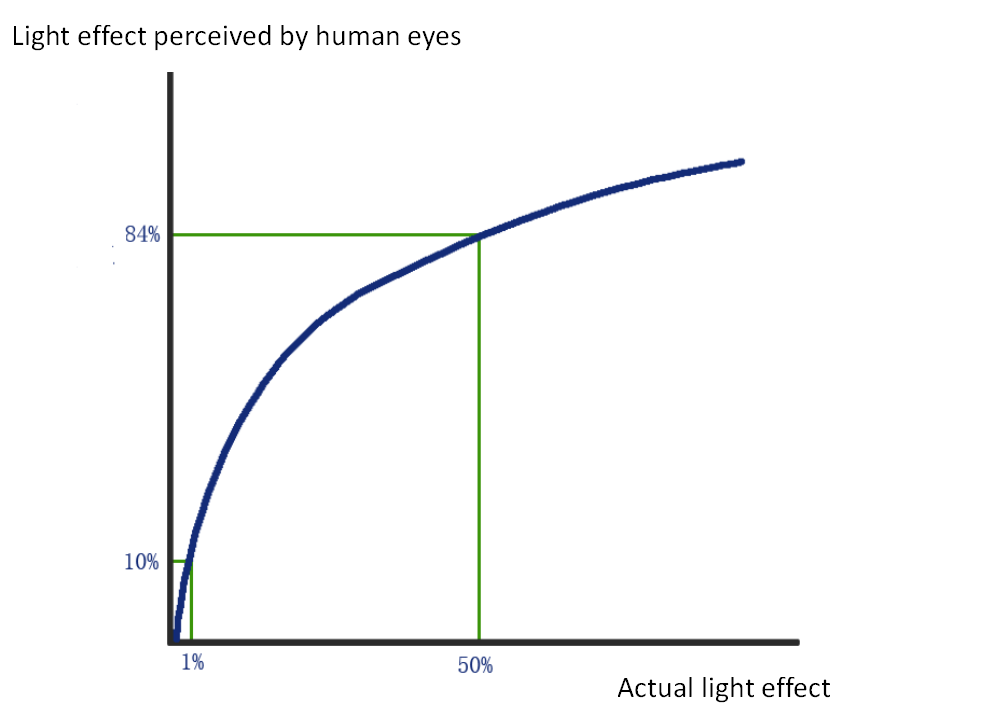
It can be seen from the above figure that when the actual brightness of the light is very low, human eyes can feel and even magnify the brightness by very slight changes. For example, the actual light brightness changes from 0% to 1%, but the human eyes perceive that the brightness changes from 0% to 10%. However, when the actual brightness changes more than 50%, the perception of human eyes tends to be gentle and can not feel the subtle change of the light.
Therefore, in order to conform to the perception mode of human eyes, the best change effect of the light effect is to change slowly at low brightness and fast change at high brightness. That is, when we use the dimmer to adjust the light, the changing curve of the dimmer and the light effect should be as shown in the figure below.
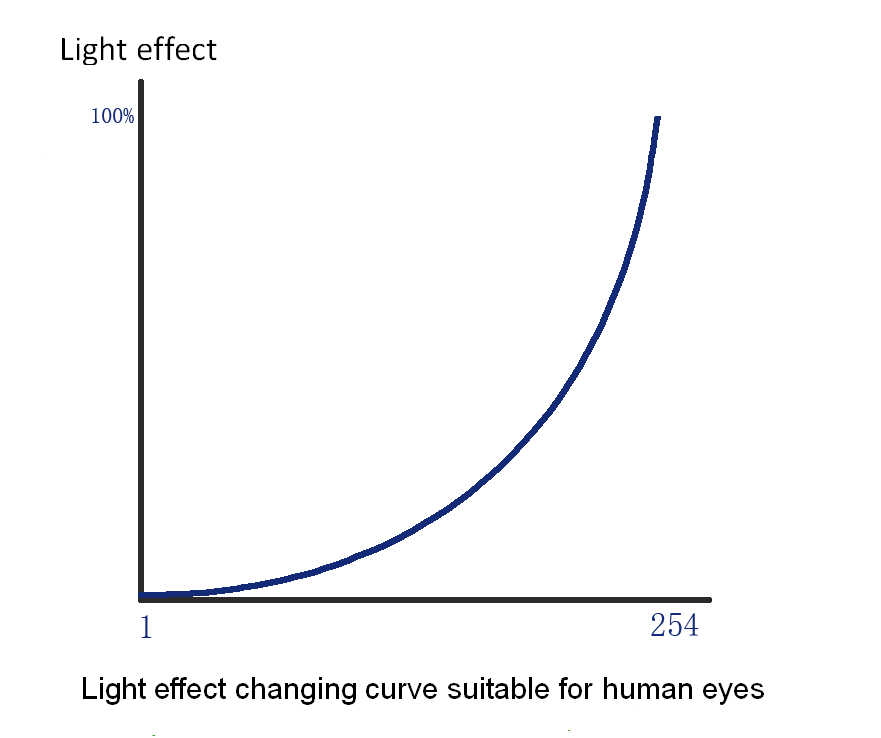
It's easy to cause misunderstanding here - isn't the figure above a logarithmic curve? Isn't that the logarithmic curve of driver is better? But let's look at the differences between the logarithmic curve of driver and the figure above:
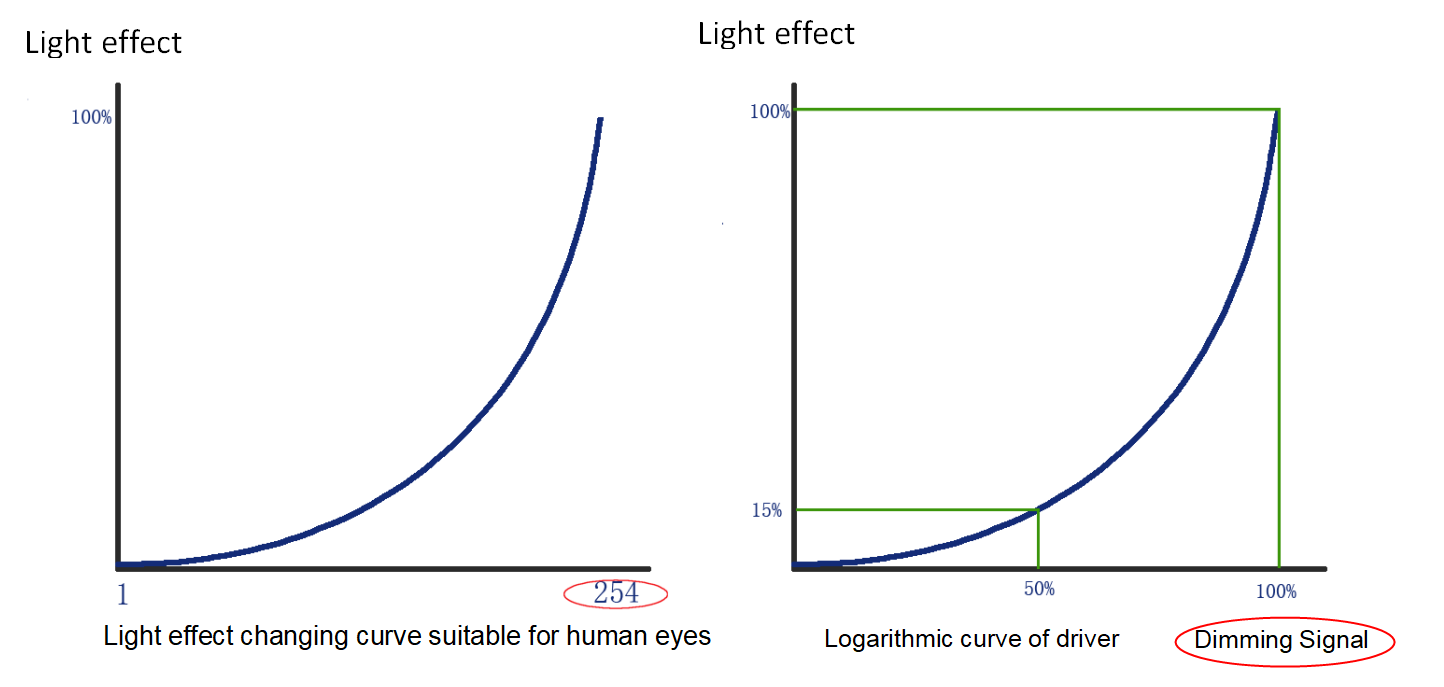
Now you can see that in the light effect changing curve suitable for human eyes, the variable corresponding to the light effect is 1-254 control signal, which is the control signal of the dimmer; and the variable corresponding to the light effect of the logarithmic dimming curve of driver is dimming signal, which is the output signal of the dimmer. After reviewing the definitions and flow charts at the beginning of this article, we understand that they are not the same.
In order to compare the pros and cons of driver’s dimming curves, the relation between 1-254 signal and dimming signal controlled by the dimmer should be introduced:
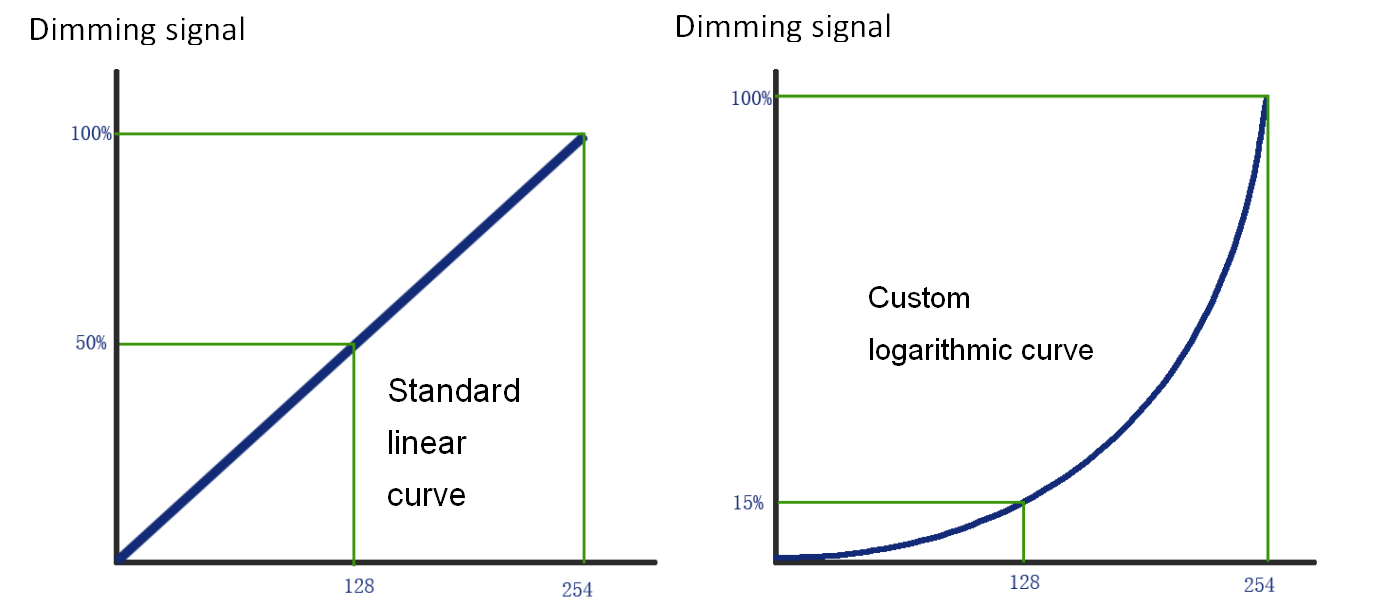
The changing curve of 1-254 control signal of dimmer and dimming signal is also classified as standard linear curve and custom logarithmic curve. The final performance of light effect is affected by both curves of dimmer and driver, so there will be four results:
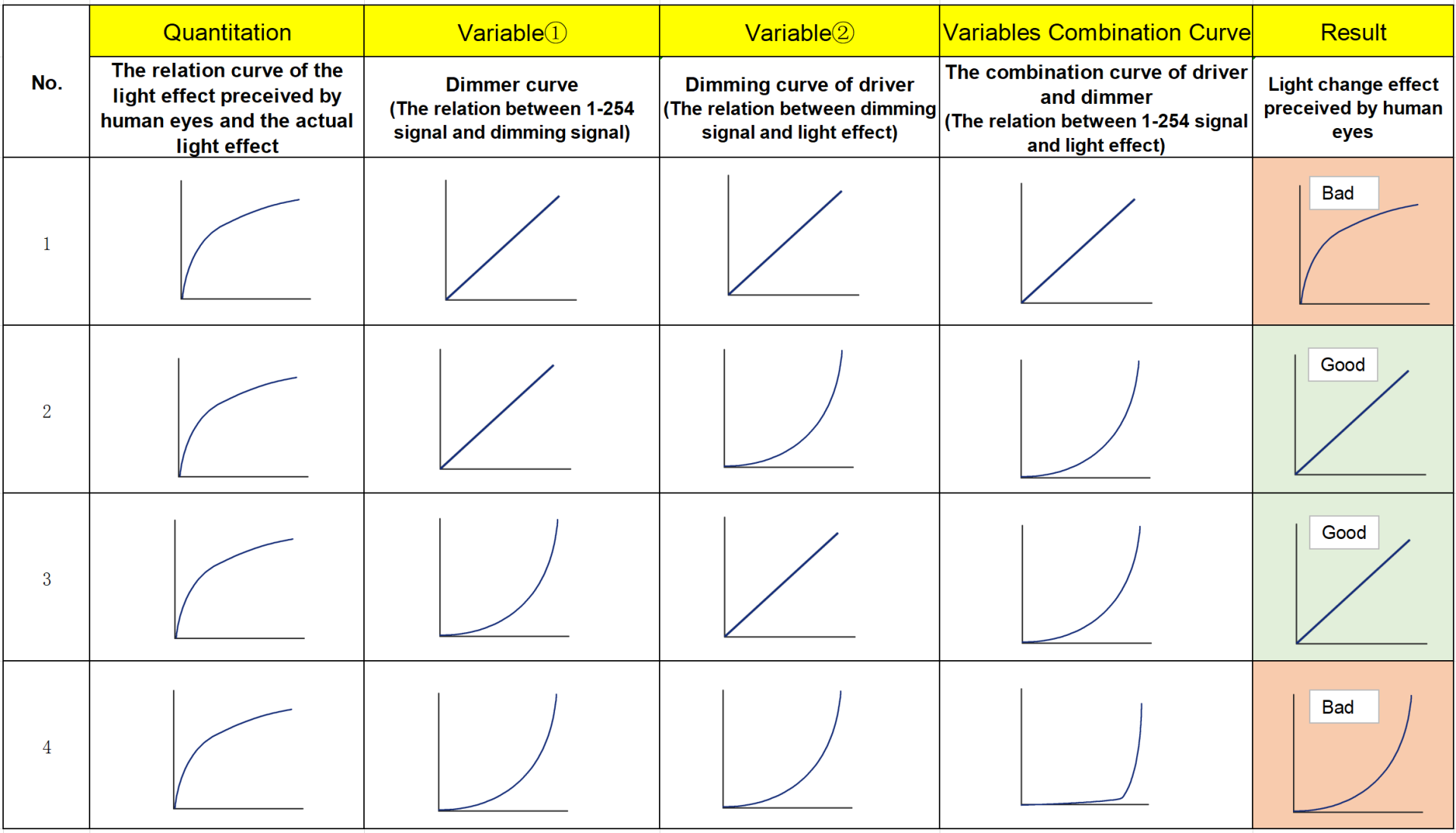
As shown in the figure above, the combinations of number 2 and 3 are better for the dimming effect perceived by human eyes.
Attention please, here comes the conclusion.
Therefore, the logarithmic curve dimming and linear curve dimming of driver are running neck and neck. As long as they match the dimming curve of the dimmer, the dimming effect of the two is the same. That is, the drive is logarithmic dimming, while the dimmer is linear dimming; or the driver is linear dimming, while the dimmer is logarithmic dimming.
Because the standard curves of most dimmers are linear, the logarithmic curve of the driver’s default configuration can realize the optimal dimming effect. As for some custom logarithmic curve dimmer on the market, you need to adjust the dimming curve of corresponding DALI driver to linear dimming mode on the host computer software to achieve the optimal dimming effect.
But then, why the standard curve of general dimmer is linear? Will custom logarithmic curve of dimmer bring other negative effects to the dimming application of light fixtures? Any other functions of dimming curves of driver besides the effect of smooth dimming perceived by human eyes? Do you want to know the answers? Follow LIFUD! We will share knowledge about lighting and driver with you from time to time.
Previous article
Previous article










